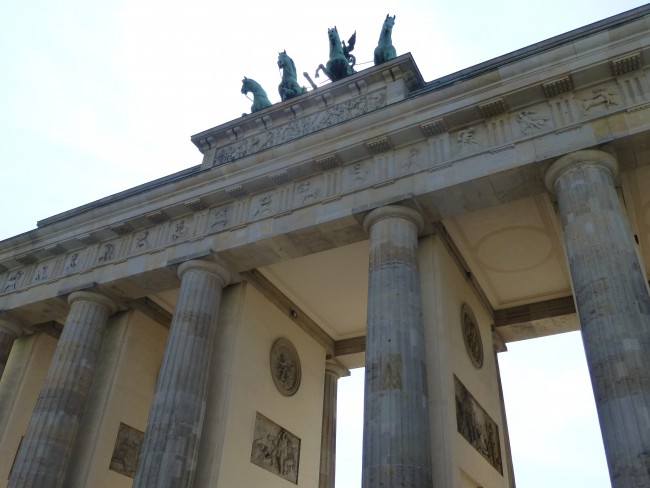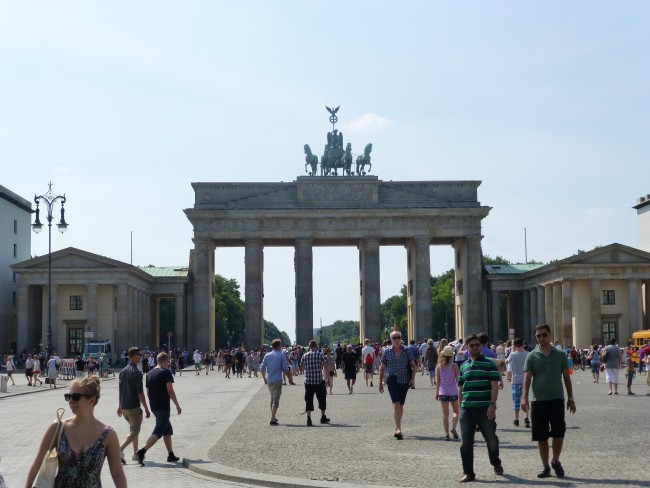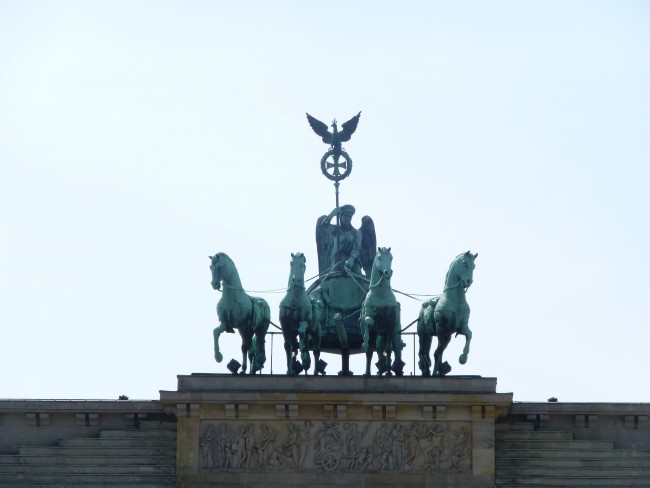
Brandenburg Gate (Brandenburg Tor in German) is one of Berlin’s most famous sites for several reasons. First off, it was built in the 18th century as a symbol of peace and is an excellent example of German Classicism design; the statues of the Quadriga of Victory on the sandstone structure of columns is magnificent to behold. Secondly, Brandenburg Gate stood right at the divide of East and West Berlin during the era of the Berlin Wall and instead of being a symbol of peace, it became a symbol of a divided nation.

The Brandenburg Gate Quadriga
The Quadriga of Victory, which consists of the goddess of victory riding a chariot being pulled by a fleet of horses, has its own bit of history. The statue was placed atop Brandenburg Gate when the structure was first built, but it only stayed there a decade. In 1806, Napoleon Bonaparte took occupation of Berlin (after he entered the city by marching through Brandenburg Gate) and subsequently ordered the Quadriga to be taken down and had it moved to France. It wasn’t until 1814, when a Prussian army descended on Paris after Napoleon’s defeat, that the Quadriga was reclaimed and returned to its rightful home at the top of Brandenburg Gate. The iron cross you see being held by the goddess of victory was also added at this time to commemorate Prussia’s victory over Paris.

Take Time to Walk Through Brandenburg Gate
Walking through the Brandenburg Gate is a good reminder of the freedom all Berliners enjoy today as it wasn’t very long ago that the people of Berlin could not move freely from one side to the other. When the Berlin Wall fell, the Brandenburg Gate was the location of much of the celebration as people moved freely between the east and west sides of the gate for the first time in decades. This also makes it an excellent place to start your day in Berlin, as I mentioned in my One Day in Berlin itinerary, as it gives you a good first base for Berlin’s tumultuous history, which you’ll continue to learn about as you explore Berlin.